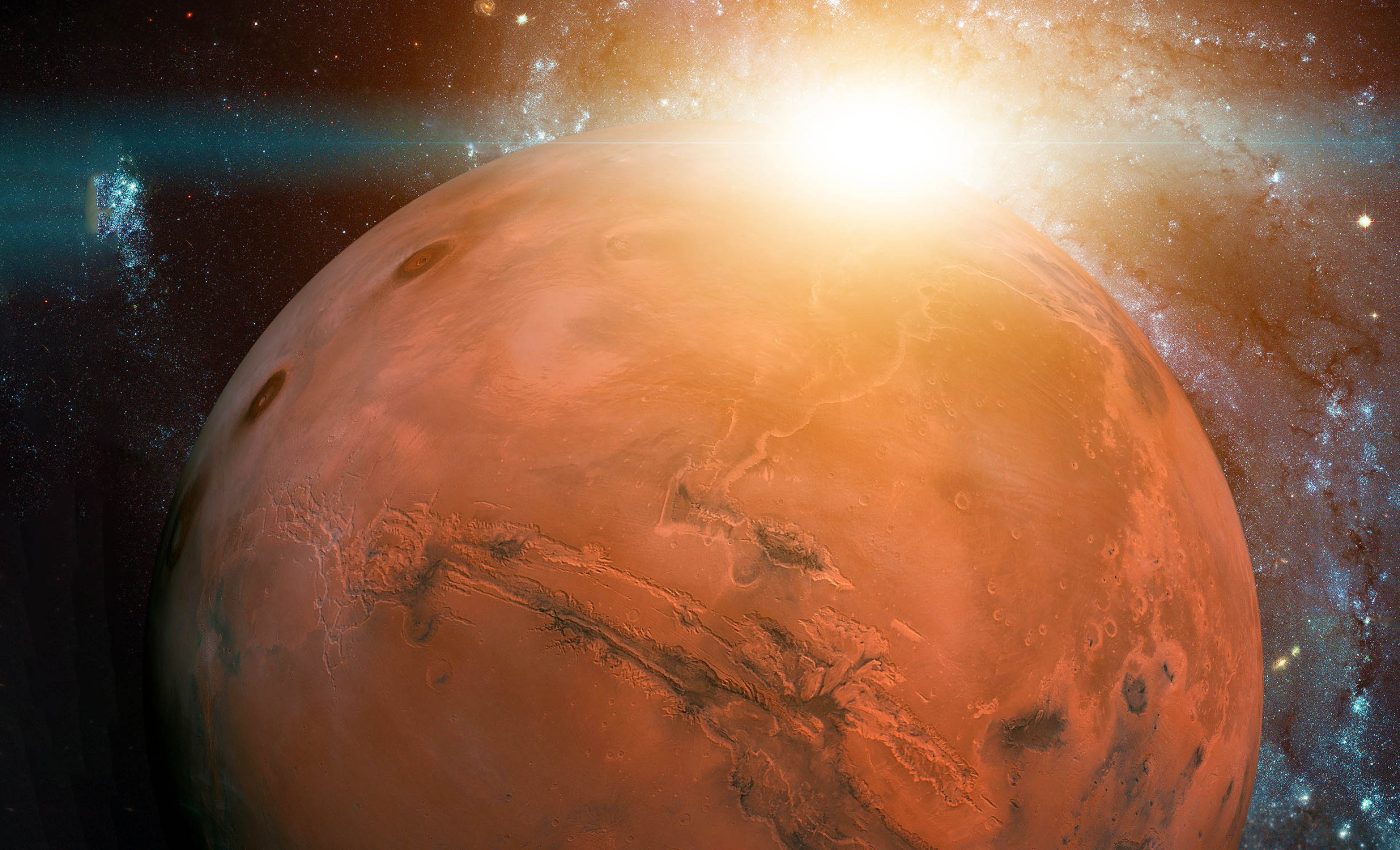
Massive solar storm strikes Mars, spacecraft capture surface storm and auroras
As the Sun reaches the peak of its activity cycle, known as the solar maximum, Mars scientists have been eagerly awaiting the arrival of epic solar storms.
Over the past month, their patience has been rewarded as NASA’s Mars rovers and orbiters have provided them with an unparalleled opportunity to witness a series of solar flares and coronal mass ejections reaching the Red Planet.
In some cases, these events have even triggered breathtaking Martian auroras.
Front row seat on Mars for the solar maximum
Don Hassler of Southwest Research Institute’s Solar System Science and Exploration Division in Boulder, Colorado is the principal investigator of Curiosity’s Radiation Assessment Detector (RAD).
He remarked, “I wouldn’t be surprised if this active region on the Sun continues to erupt, meaning even more solar storms at both Earth and Mars over the coming weeks.”
X12 solar flare is troubling for astronauts
On May 20, an extreme solar event took center stage. Based on data from the Solar Orbiter spacecraft, a joint mission between ESA (European Space Agency) and NASA, the solar flare was later estimated to be an X12 — the strongest of several types.
The flare unleashed a torrent of X-rays and gamma rays towards Mars, closely followed by a coronal mass ejection carrying charged particles.
While the X-rays and gamma rays arrived first at the speed of light, the charged particles trailed slightly behind, reaching the Red Planet in just tens of minutes.
Had astronauts been standing next to NASA’s Curiosity Mars rover during this event, they would have been exposed to a radiation dose of 8,100 micrograys — equivalent to 30 chest X-rays.
Although not deadly, this surge was the most significant measured by RAD since the rover’s landing 12 years ago.
The data collected by RAD will be invaluable in helping scientists plan for the highest level of radiation exposure that future astronauts might encounter on Mars.
As Hassler points out, “Cliffsides or lava tubes would provide additional shielding for an astronaut from such an event. In Mars orbit or deep space, the dose rate would be significantly more.”
Dancing snow and disoriented orbiters
The intensity of the May 20 solar storm was evident in its impact on the Martian surface and orbiting spacecraft.
Curiosity’s black-and-white navigation camera images appeared to dance with “snow” — white streaks and specks caused by charged particles striking the cameras.
High above, NASA’s 2001 Mars Odyssey orbiter experienced a momentary disorientation as its star camera, used for orientation, was overwhelmed by the influx of solar particles.
Despite this brief lapse, the orbiter managed to collect crucial data on X-rays, gamma rays, and charged particles using its High-Energy Neutron Detector.
This wasn’t Odyssey’s first encounter with a powerful solar flare. In 2003, an estimated X45 solar flare fried the orbiter’s radiation detector, which was designed to measure such events.
Auroras engulfing the Red Planet
While Curiosity and Odyssey faced the storm head-on, NASA’s MAVEN (Mars Atmosphere and Volatile EvolutioN) orbiter captured a stunning display of auroras engulfing the entire planet.
Unlike Earth, which is protected by a strong magnetic field that limits auroras to the polar regions, Mars lost its internally generated magnetic field long ago.
As a result, when charged particles bombard the Martian atmosphere, they create a global aurora that illuminates the entire planet.
Christina Lee of the University of California, Berkeley’s Space Sciences Laboratory (SSL), who serves as MAVEN’s Space Weather Lead, emphasized the magnitude of this event.
“This was the largest solar energetic particle event that MAVEN has ever seen. There have been several solar events in past weeks, so we were seeing wave after wave of particles hitting Mars,” Lee emphasized.
Tracking solar storms on Mars for future astronauts
In summary, as the Sun’s fury continues to unleash itself upon our cosmic neighborhood, scientists remain vigilant in their quest to unravel the mysteries of solar storms and their impact on the Red Planet.
Through the tireless efforts of NASA’s Mars rovers and orbiters, we have gained an unprecedented glimpse into the awe-inspiring power of our star and the challenges that future astronauts may face on their journey to Mars.
As we eagerly await the next wave of solar activity, one thing remains certain: the Sun’s wrath will continue to captivate our imagination and drive us to push the boundaries of our understanding, propelling us ever closer to unlocking the secrets of our universe.
—–
Like what you read? Subscribe to our newsletter for engaging articles, exclusive content, and the latest updates.
Check us out on EarthSnap, a free app brought to you by Eric Ralls and Earth.com.
—–















